All about wooden picture frames
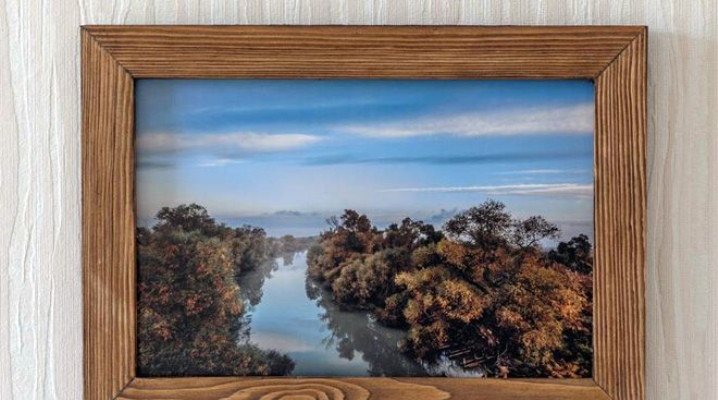
To decorate paintings, photographs and other decorative products in specialized stores, you can purchase both simple and artistic baguettes from various materials. But it is wooden frames that have a great heritage left by our ancestors. It is difficult to imagine the work of Renaissance artists in plastic or aluminum frames. Even modern interiors benefit from the presence of wood in the decor, frames made from natural materials enliven and enrich the canvases.
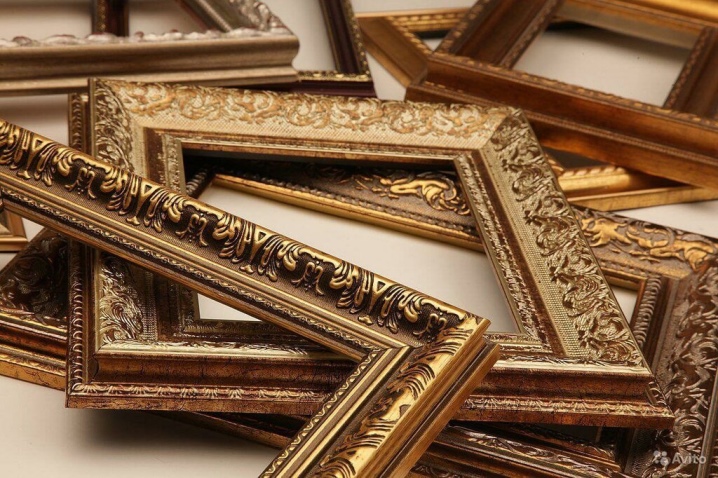
Peculiarities
Baguettes are wooden planks of all possible widths, processed on carpentry machines in order to give them various shapes - straight, stepped, concave, convex and more complex. To obtain artistic products, a carved pattern is applied to the surface of the profile. Baguettes can be on sale both unpainted and completed.
The latter are purchased in narrowly focused shops selling painting, photography or handicraft materials.
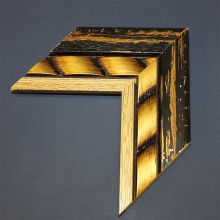
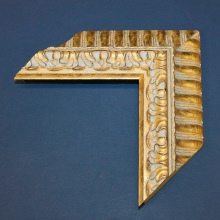
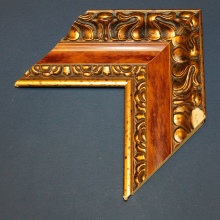
Wooden moldings are easy to paint in any shade using various techniques. For example, they can be given an aged look or imitate stone, suede, leather, non-ferrous metal with patina. Frames enriched with the presence of gilding or silver, which do not completely cover the wood corrugation, look good.
The combination of precious metal shades with wood gives the product a rich, presentable look with an old history.
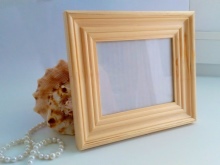
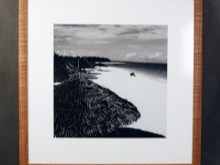

A good frame often becomes an accent part in the decor of a room. It provides a transition from the painting to the interior, and this connecting link should correspond to the stylistic direction of the design. For example, obey the theme of modern, loft, Provence, support the color scheme of the room or play in contrast. A harmonious perception of the environment depends on the frame, as well as on the canvas itself.
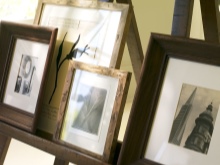
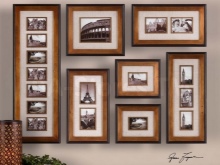
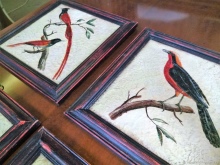
Baguette frames have their own history. Framing windows, doors and mirrors with elegant elements was made in ancient times. In the chronicles of the 12th century, it was mentioned about the design of canvases by them, but no one knows the exact date of the application of baguettes for these purposes. Making a baguette for decorating pictures may seem like a simple task to someone. But in fact, this is a rather responsible process.
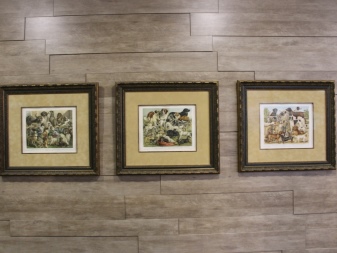
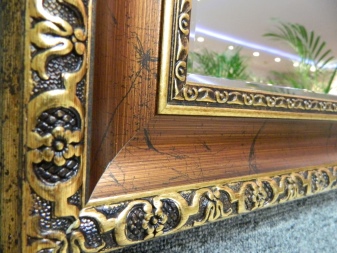
For products, only dry and high-quality timber is chosen, without cracks, chips and traces of knots. Baguettes are made of oak, alder, Karelian birch, hazel, pine, cherry, wenge. Wood with an expressive pattern and unusual texture is coated with varnish or oils, preserving its natural beauty.
The rest of the material is subjected to various colors.
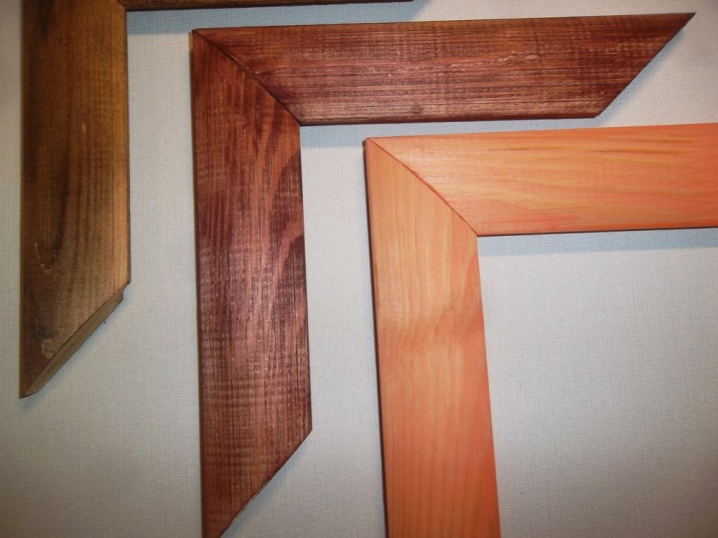
Stucco is used to create artistic frames. The corrugated ornament is rolled with a paste, which includes casein glue, industrial oil, and chalk. Wood flour or paper is taken as a basis. High-quality stucco molding is not inferior in strength to dense wood or bone. The second way to decorate baguettes is carving. It can be produced on machine tools, but handicrafts are more expensive and valuable frames. Soft wood is used for carving.
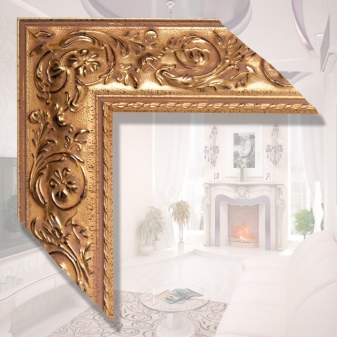
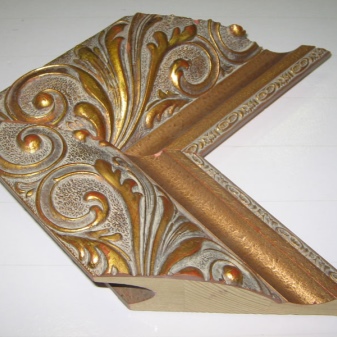
Species overview
Wooden baguettes for paintings are made from beams of different widths. Until the moment of decoration, they can have the form of a panel, profile, strip. The baguette, brought to its logical conclusion, is distinguished by smooth curly shapes. The variety of types allows you to choose frames for different paintings in any interior. But the most original copies are ordered in a baguette workshop individually, according to their own drawing. They will be able to make the most unusual products.
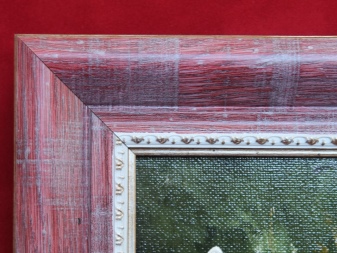
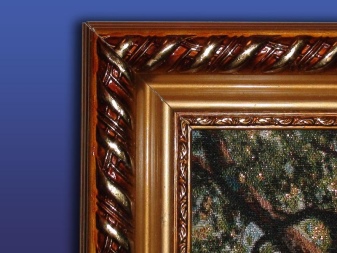
Wooden baguette profile is divided into veneered, painted and unpainted. Simple and artistic products are also distinguished. But professional baguettes note three types of frames, depending on the direction of the relief or on its absence: classic, reverse, flat.
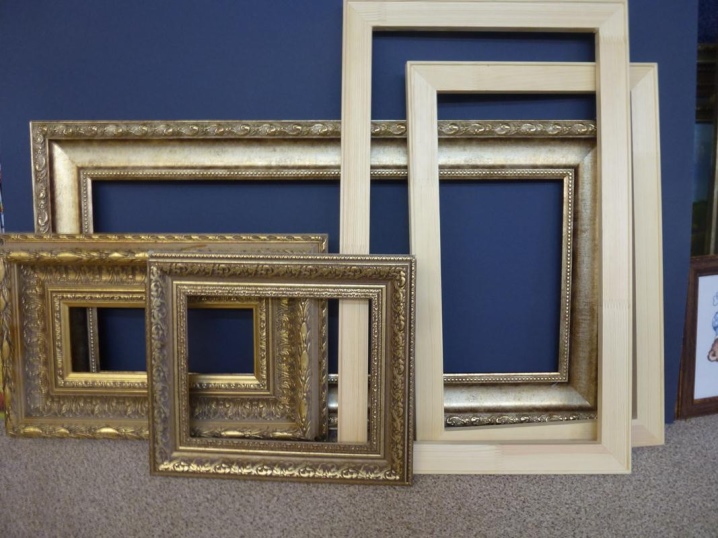
Classical
The most common frame option. The directionality of the relief from the high outer edge to the low edge, aligned with the canvas, enhances the perspective of the image. The gaze, as it were, slides off the frame and concentrates on the picture. Classic frames are suitable for most canvases, because they emphasize the artistic significance of the canvas, and not their own.

Back
Quite a rare occurrence among baguette products. The direction of the relief goes in the opposite direction, that is, it is located at the thick end of the picture itself and decreases towards the outer edge. The effect of extrusion, expansion, pushing the boundaries is formed. It works great for filing panoramic canvases that depict endless battle scenes, an all-encompassing sea or field, dense urban development. The scale of the canvases is increased due to the well-chosen frame. By the way, this technique is also useful for decorating mirrors.
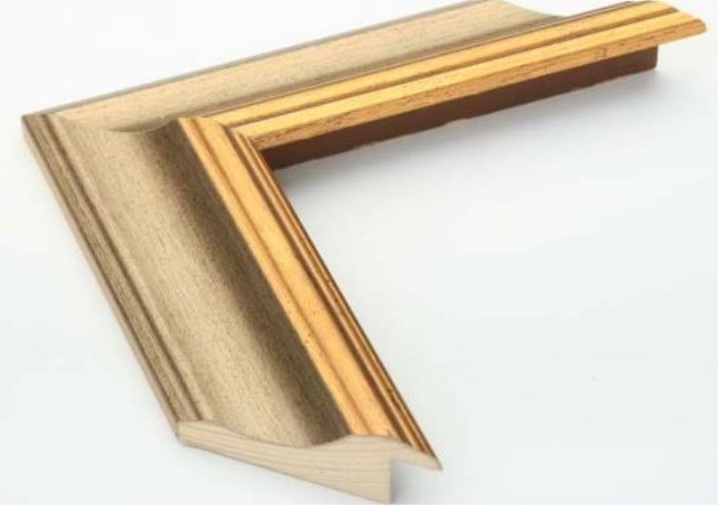
Flat
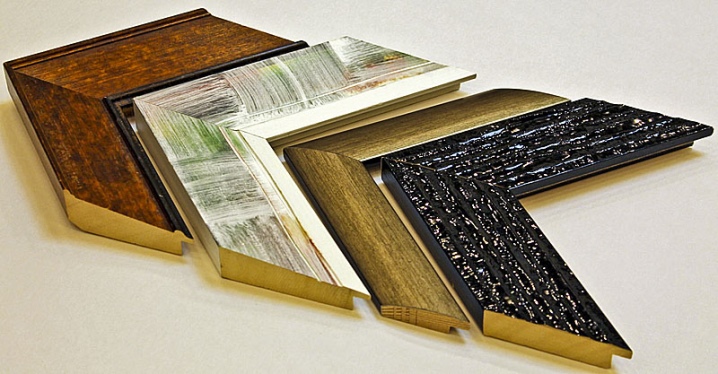
The baguette can be both simple and artistic, the main thing is that the frame has a single plane without elevations in any direction. Such products are well presented by the canvases of contemporary authors. They look good abstraction, light watercolor. A flat baguette can be used to decorate a photo transferred to a canvas. Frames, located in a single plane, do not attract attention to themselves, thereby allowing you to completely preserve it for admiring the canvas.
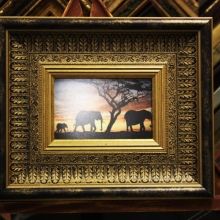
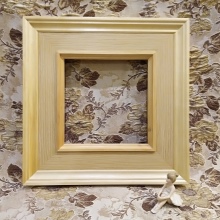
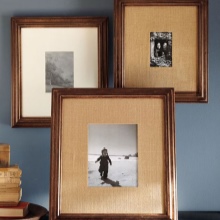
Selection Tips
The frame baguette is matched to the picture, and not to the interior, but you should not frankly ignore the design features either. Sometimes the frame on the wall is not occupied by the canvas at all, it is left empty, the beauty of the baguette allows you to create decor without the participation of a painting.
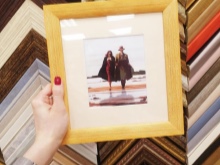
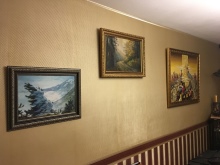

If you choose a baguette for a certain canvas in an already finished interior, you should take into account some rules.
- The frame should complement the artist's canvas, and not be more beautiful than it. It is impossible to acquire a frame of high artistic value for simple, inexpressive paintings; in such conditions, painting will lose its meaning. The same rule works with photographs, if the task is to draw attention to them, the baguette should be as simple as possible.
- Moving on to the dimensions, we recall that the width of the baguette is selected in proportion to the dimensions of the canvas. For example, a 100x60 cm canvas should have a larger frame than a painting, 50x70 cm in size. But this rule does not apply to miniature images, they just need wider frames to give volume to a barely noticeable canvas. As for large canvases with massive frames, it should be remembered that they are not suitable for every room. For large-scale canvases, space is needed.
- For interiors with an unusual color scheme or in need of accents, an unpainted baguette profile is acquired, which can be tinted in any suitable shade. It is easier to experiment with colorless products, for example, using decoupage techniques, gilding, patinating and other methods that allow you to design an antique frame. In all other cases, you can purchase a ready-made painted profile, which will be half a tone higher or lower than the framed picture.
- According to etiquette, it is impolite to donate a picture without the consent of the receiving party, because you can make a mistake with the choice. If the gift is agreed and desired, the baguette is selected for it without frills, focusing on the canvas itself. But at the same time, the frame should have a discreet charm, bear the imprint of good taste.
- The baguette as an intermediate link should create harmony between the canvas and the design of the room.
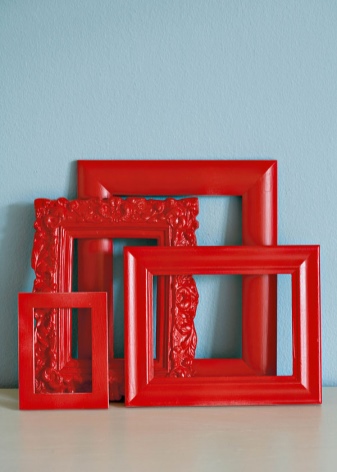
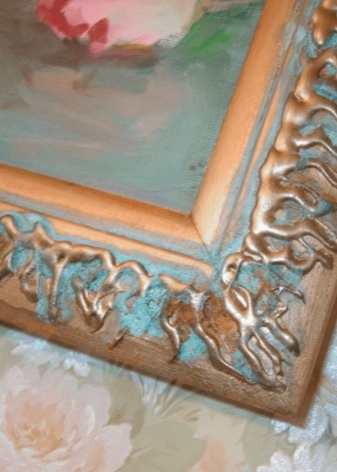
How to do it yourself?
Knowing the size of the picture, you can make a frame for it yourself. The manufacturing process will not take too long, it should be divided into three stages: preparing the tools and materials, working on the frame and painting the finished product.
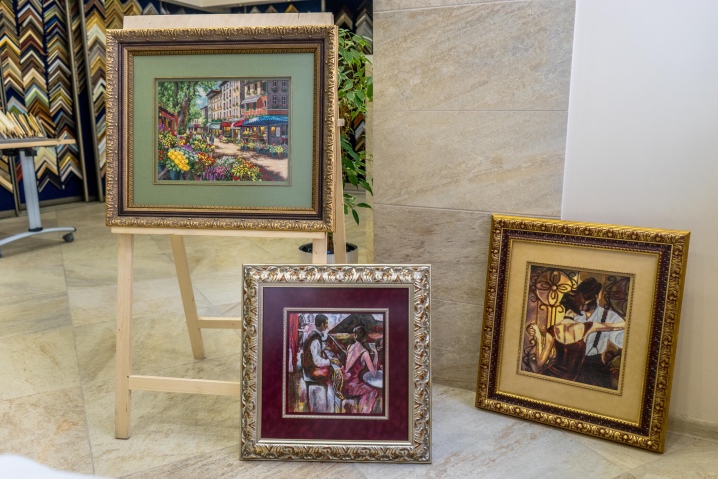
Tools and materials
To create a frame, complex special tools are not needed, everything you need can be found in every home. You should prepare a tape measure, a pencil, glue for working with wood, a hacksaw, medium-sized sandpaper, staples or small nails, a small hammer. The presence of a miter box will greatly facilitate the workflow, then the angles when cutting the plinth will turn out to be more precise. And if there is a clamp in the house, it will help fix the corners of the frame when gluing.
From materials it is necessary to purchase a wooden plinth that is suitable for the width and a thick sheet of cardboard.
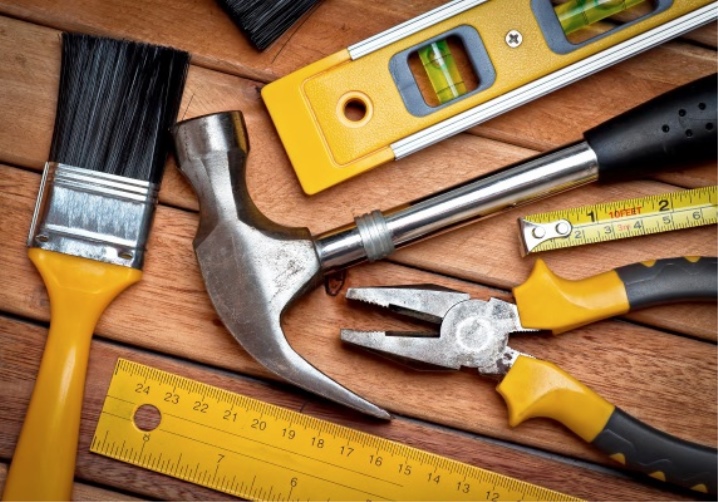
Technology
When the tools and materials are collected and laid out in easily accessible places, they proceed directly to the work process.
- The plinth, profile or baguette is cut into 4 pieces in accordance with the size of the picture. A small margin should be taken into account for adjusting the corners.
- Using a miter box, the required angle is selected and cuts are made. If no fixture is available, use a square or protractor to mark the 45 degree angle. Cuts are made with a fine-toothed hacksaw or an electric jigsaw.
- The resulting ends are cleaned with sandpaper and freed from dust.
- When assembling the frame, pay attention to the clarity of the cuts, mistakes can lead to distortion of the product.
- Dry cleaned ends are treated with glue with good adhesion. In order for the parts to dry reliably, they are pressed tightly using clamps. You can do without them, since in any case, from the seamy side of the frame, the corners are fixed with metal staples or boot studs.
- After the glue has completely dried, the clamps are removed. If there are gaps, prepare the paste using chips and glue, which are rubbed into the slots. Allow the frame to dry again, and then finish sanding it with sandpaper.

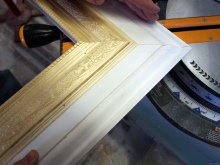
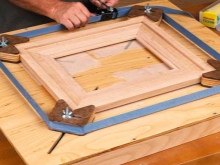
How to cover?
It is enough to varnish wood with a beautiful texture. If it is necessary to paint the product, a shade is chosen with a difference of half a tone to the general color of the canvas. In addition to painting, you can use foil, which is planted on glue or varnish, and then treated with an almost transparent paint. The made frame will become an important part of the picture, because without it the canvas does not have a finished look.
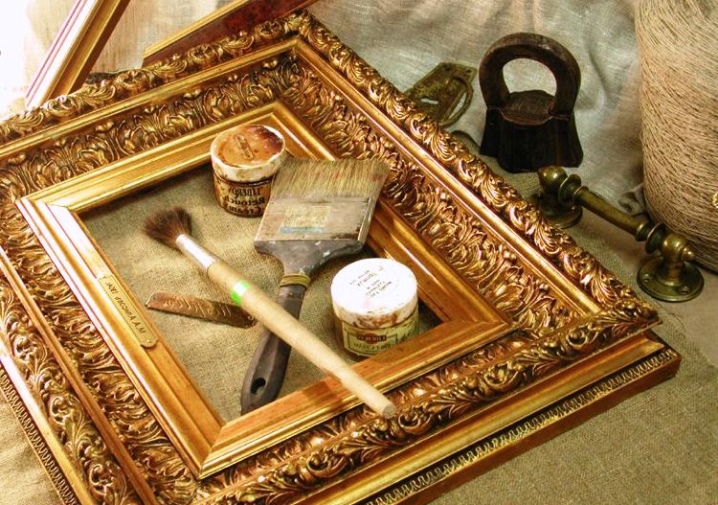













The comment was sent successfully.